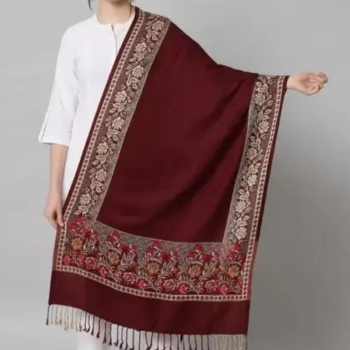In the bustling streets of Jaipur, a city renowned for its rich history and vibrant culture, lives a woman named Anjali. A teacher by profession and a mother to two young children, Anjali is the epitome of dedication and resilience. Her life is a delicate balance between her demanding job and her family responsibilities. As winter sets in, the mornings are chilly and the nights even colder—a reality that Anjali faces each year. The cold, however, is not just a seasonal inconvenience; it becomes a distinct challenge that she must navigate.
For Anjali, the arrival of winter means more than just pulling out her woolens. It symbolizes a time when her family's comfort is at risk, and her children's health needs heightened attention. The bitter cold seeps through the old windows of her modest home, making every morning a struggle to get the children out of bed and ready for school. The problem is not merely the physical discomfort but the emotional toll it takes—a sense of helplessness as she watches her children shiver.
This is where the humble shawl comes into play. Not just any shawl, but one crafted with care, designed to provide warmth and comfort. A shawl like this becomes more than just an accessory; it is a solution, a warm embrace that Anjali can drape around her children as they prepare for their day. The shawl addresses a critical issue—a mother's anxiety over her children's well-being during the harsh winter months.
The shawl's practicality is matched by its cultural significance. In many Indian households, a shawl is a symbol of protection and love, often passed down through generations. It is this dual role—both functional and symbolic—that makes it indispensable. For Anjali, wrapping her children in a shawl is akin to wrapping them in her care and warmth, reassuring them and herself that they are shielded from the cold.
Let's delve deeper into the transformative impact that a shawl can have. Take the case of Rajesh, a shopkeeper in Delhi. His daily routine involves long hours in a small, open-fronted store, exposed to the biting winter air. Without adequate heating, Rajesh relies on layers of clothing to stay warm. However, it is the shawl that provides the ultimate comfort, allowing him the flexibility to move freely while maintaining warmth. For Rajesh, the shawl is not just a garment; it's a companion that supports him through the demanding workday.
The shawl's versatility is another reason it stands out as a must-have. Whether it's Anjali using it to shield her children or Rajesh draping it over his shoulders during long hours at work, the shawl adapts to the needs of the wearer. Its ability to serve both practical and emotional needs makes it an essential part of Indian life, particularly during the colder months.
Moreover, the shawl's role is not limited to home or work. In social settings, it becomes a statement piece, an expression of style and tradition. Crafted with intricate designs and vibrant colors, a shawl can elevate any outfit, making it suitable for family gatherings and festive occasions.
In conclusion, the shawl is more than just a piece of fabric; it is a solution woven with threads of warmth, comfort, and tradition. For individuals like Anjali and Rajesh, it addresses a crucial need—providing protection against the cold while offering a sense of emotional security. This dual functionality ensures that the shawl remains an enduring staple in Indian households, cherished not only for its practicality but for the warmth it represents.
As winter approaches, consider the shawl not just as an accessory but as a meaningful addition to your collection, one that promises to wrap you and your loved ones in comfort and care.
Visit Vyaparify Site:
https://id.vyaparify.com/asgarments 
